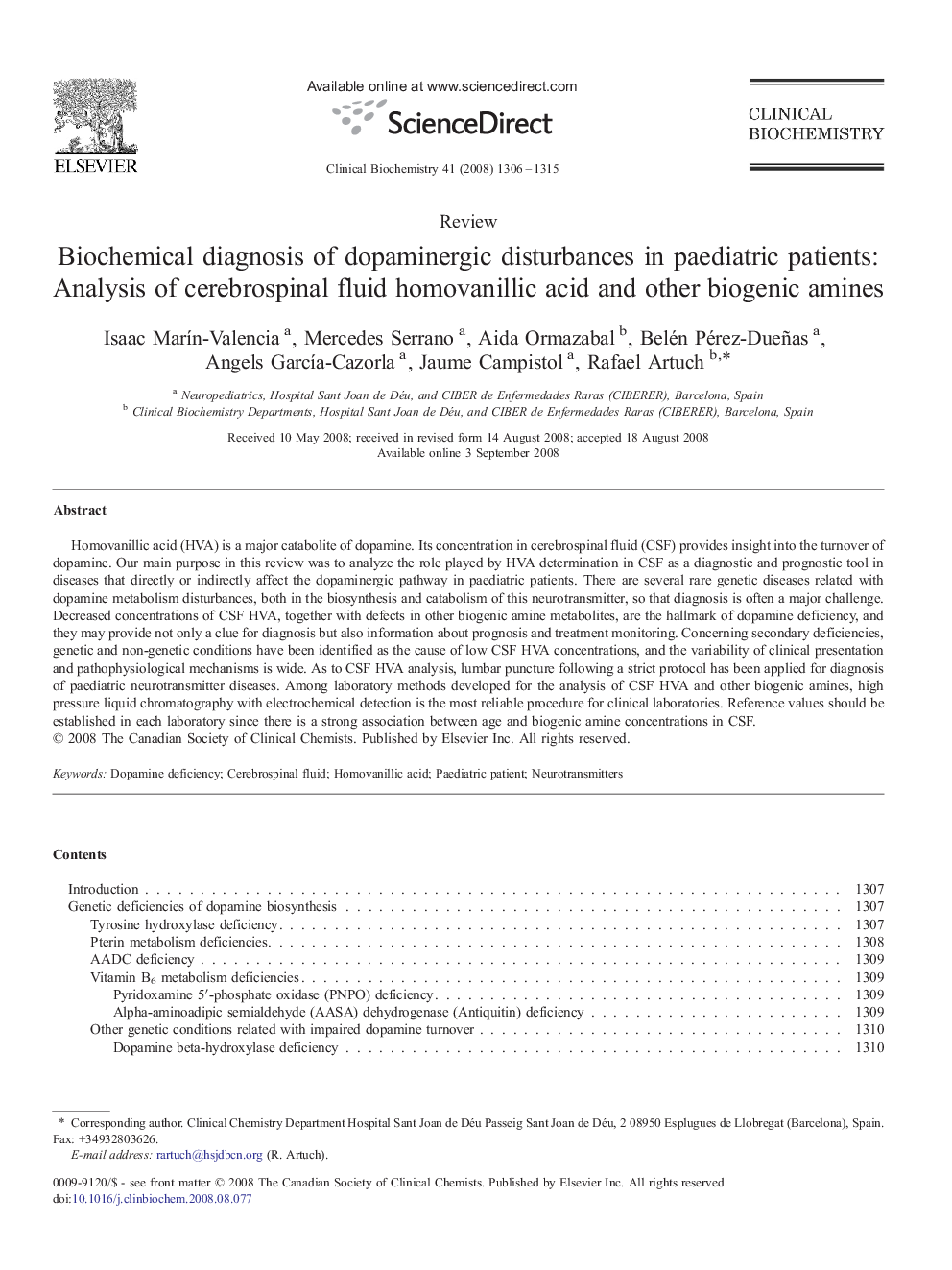| Article ID | Journal | Published Year | Pages | File Type |
|---|---|---|---|---|
| 1969805 | Clinical Biochemistry | 2008 | 10 Pages |
Homovanillic acid (HVA) is a major catabolite of dopamine. Its concentration in cerebrospinal fluid (CSF) provides insight into the turnover of dopamine. Our main purpose in this review was to analyze the role played by HVA determination in CSF as a diagnostic and prognostic tool in diseases that directly or indirectly affect the dopaminergic pathway in paediatric patients. There are several rare genetic diseases related with dopamine metabolism disturbances, both in the biosynthesis and catabolism of this neurotransmitter, so that diagnosis is often a major challenge. Decreased concentrations of CSF HVA, together with defects in other biogenic amine metabolites, are the hallmark of dopamine deficiency, and they may provide not only a clue for diagnosis but also information about prognosis and treatment monitoring. Concerning secondary deficiencies, genetic and non-genetic conditions have been identified as the cause of low CSF HVA concentrations, and the variability of clinical presentation and pathophysiological mechanisms is wide. As to CSF HVA analysis, lumbar puncture following a strict protocol has been applied for diagnosis of paediatric neurotransmitter diseases. Among laboratory methods developed for the analysis of CSF HVA and other biogenic amines, high pressure liquid chromatography with electrochemical detection is the most reliable procedure for clinical laboratories. Reference values should be established in each laboratory since there is a strong association between age and biogenic amine concentrations in CSF.
